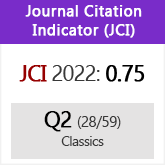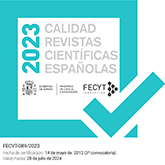El nacimiento de Orión en Euforión de Calcis y en Ovidio: estudio de los orígenes y la tradición de un mito beocio
DOI:
https://doi.org/10.3989/emerita.2015.12.1336Palabras clave:
Euforión de Calcis, Ovidio, Fastos, Orión, Hirieo, MitografíaResumen
Ovidio (Fast. V 493-544) nos ofrece el testimonio de una versión del nacimiento de Orión que se remonta, por lo menos, a Euforión de Calcis. Dicha versión es irreconciliable con las tradiciones panhelénicas transmitidas por la épica arcaica. En el artículo se analiza el relato a partir del texto de Ovidio y del escolio de la Ilíada que nos ha transmitido la versión de Euforión. Desde una perspectiva estructural, el relato contiene motivos de carácter ritual que pueden relacionarse con un rito de fertilidad anatolio testimoniado en un texto hitita, el denominado Ritual contra la impotencia de Paškuwatti (CTH 406). El sustrato cultual compartido por las dos riberas egeas, la europea y la asiática, sugiere la pervivencia de motivos de origen ritual transfigurados en mitemas integrantes del relato analizado.
Descargas
Citas
Barton.k, A. 1979: «Greek Dialects between 1000 and 300 BC», Studi Micenei ed Egeo-Anatolici 20, pp. 113-130.
Bernabé, A. 1979: Textos literarios hititas, Madrid.
Bowra, C. M. 1938: «The Daughters of Asopus», Hermes 73, pp. 213-221.
Bryce, T. 2006: The Trojans and their Neighbours, Londres - Nueva York.
Buck, C. D. 19684 (1955): The Greek Dialects. Grammar, Selected Inscriptions, Glossary, Chicago - Londres.
Burkert, W. 1979: Structure and History in Greek Mythology and Ritual, Berkeley.
Burkert, W. 1987: «Oriental and Greek Mythology: The Meeting of Parallels», en Bremmer, J. (ed.), Interpretations of Greek Mythology, Londres, pp. 10-40.
Cameron, A. 2004: Greek Mythography in the Roman World, Oxford.
Clayman, D. 1883: «Corinna and Pindar», en Rosen, R. M. y Farrell, J. (eds.), Nomodeiktes. Greek Studies in Honor of Martin Oswald, Ann Arbor, pp. 633-642.
Clua, J. A. 1992: Euforió de Calcis. Poemes i fragments, Barcelona.
Collins, D. 2006: «Corinna and Mythological Innovation», Classical Quarterly 56.1, 19-32. http://dx.doi.org/10.1017/S0009838806000036
Cuartero, F. J. 2012: Pseudo-Apol·lodor, Biblioteca, vol. I, Introducció, edició crítica, traducció i notes, Barcelona.
David-Hawkins, J. 2009: «The Arzawa Letters in Recent Perspective», British Museum Studies in Ancient Egypt and Sudan 14, pp. 73-83.
Ekroth, G. 2002: The Sacrificial Rituals of Greek Hero Cults in the Archaic to the Early Hellenistic Periods, Kernos, supl. 2, Lieja.
Finkelberg, M. 2005: Greeks and Pre-Greeks. Aegean Prehistory and Greek Heroic Tradition, Cambridge. PMid:16006931
Fontenrose, J. 1981: Orion: The Myth of the Hunter and the Huntress, Berkeley - Los Ángeles - Londres.
Fossey, J. M. 1988: Topography and Population of Ancient Boeotia, Chicago. PMid:3421372
Fowler, R. 2000: «Greek Magic, Greek Religion», en Buxton, R. (ed.), Oxford Readings in Greek Religion, Oxford, pp. 317-343.
Frazer, J. G. 1898: Pausanias' description of Greece, translation with a commentary, vol. V, Londres.
Funke, P. 2013: «Hyria», Brill's New Pauly. Brill Online, <http://referenceworks.brillonline.com/entries/brill-s-new-pauly/hyria-e520240> (17/05/2013).
García Trabazo, J. V. (ed.) 2002: Textos religiosos hititas, Madrid.
Gentili, B. 2003: «Le Asopidi. Corinna, PMG 694 col. 3 12-51», en Basson, A. F. y Dominik, W. J. (eds.), Literature, Art, History: Studies on Classical Antiquity and Tradition in Honour of W. J. Henderson, Fráncfort del Meno, pp. 211-223.
Guillon, P. 1958: «Corinne et les oracles béotiens: la consultation d'Asopos», Bulletin de Correspondance Hellénique 82, pp. 47-60. http://dx.doi.org/10.3406/bch.1958.2334
Güterbock H. G. 1948: «The Hittite Version of the Hurrian Kumarbi Myth: Oriental Forerunners of Hesiod», American Journal of Archaeology, 52.1, pp. 123-34. http://dx.doi.org/10.2307/500560
Haas, V. 1994: Geschichte der Hethitischen Religion, Leiden, Nueva York y Colonia. http://dx.doi.org/10.1163/9789004293946
Hansen, M. H., y Nielsen, T. H. (eds.) 2004: An Inventory of Archaic and Classical Poleis, Oxford.
Heinhold-Krahmer, S. 1977: Arzawa. Untersuchungen zu seiner Geschichte nach den hethitischen Quellen, Heidelberg.
Higbie, C. 2007: «Hellenistic Mythographers», en Woodard, R. D. (ed.), The Cambridge Companion to Greek Mythology, Cambridge, pp. 237-254. http://dx.doi.org/10.1017/ccol9780521845205.008
Hutter, M. 2003: «Aspects of Luwian Religion», en Craig Melchert, H. (ed.), The Luwians, Handbook of Oriental Studies 68, Boston, pp. 211-280. http://dx.doi.org/10.1163/9789047402145_007
Kirk, G. S. 1982: El mito: su significado y funciones en la Antigu.edad y otras culturas, Barcelona (original en inglés 1970).
Kolde, A. 2006: «Euphorion de Chalcis, poète hellénistique», en Harder, M. A., Regtuit, R. F. y Wakker, G. C. (eds.), Beyond the canon, Hellenistica Groningana 11, Leuven - Dudley, MA, pp. 141-166.
Kolde, A. 2013: «Les chevaux d'Asbotos et les génisses des Téléboens: les fragments du Thrace comme échantillons de la poétique d'Euphorion», en Cusset, C., Prioux, E., Richer, H. (eds.), Euphorion et les Mythes: images et fragments, Nápoles, pp. 281-298. PMCid:PMC3535399
Larson, J. 2001: Greek Nymphs. Myth, Cult, Lore, Oxford.
Larson, J. 2002: «Corinna and the daughters of Asopus», Syllecta Classica 13, pp. 47-62. http://dx.doi.org/10.1353/syl.2002.0006
López Eire, A. 1967: «Los topónimos en -ssos y –nthos y el Indoeuropeo», Zephyrus 18, pp. 129-135.
Massa-Pairault, F. H. 2013: «Orion», en Cusset, C., Prioux, E. y Richer, H. (eds.), Euphorion et les Mythes: images et fragments, Nápoles, pp. 41-61.
Ortolá-Guixot, A. 2005: «Corina y su poesía: una revisión», Minerva 18, pp. 71-91.
Page, D. L. 1953: Corinna, Londres.
Pagès Cebrián, J. 2013: «Euphorion dans les scholies mythographiques à l'Iliade», en Cusset, C., Prioux, E., Richer, H. (eds.), Euphorion et les Mythes: images et fragments, Nápoles, pp. 247-264.
Palumbo-Stracca, B. M. 1993: «Corinna e il suo pubblico», en Pretagostini, R. (ed.), Tradizione e innovazione nella cultura greca da Omero all'età ellenistica. Scritti in onore di Bruno Gentili II, Roma, pp. 402-412.
Pàmias, J. 2004: Eratòstenes, Catasterismes. Introducció, edició crítica, traducció i notes, Barcelona.
Parker, R. 1983: Miasma. Pollution and Purification in Early Greek Religion. Oxford [Reimpresión 2003].
Parker, R. 2011: On Greek Religion, Ithaca - Londres.
PMG = Poetae Melici Graeci, ed. D. L. Page, Oxford, 1962.
Renaud, J. M. 2004: Le Mythe d'Orion, Lieja.
Thomas, R. 1992: Literacy and Orality in Ancient Greece, Cambridge. http://dx.doi.org/10.1017/CBO9780511620331
Tsitsibakou-Vasalos, E. 2007: Ancient Poetic Etymology. The Pelopids: Fathers and Sons, Stuttgart.
Van Rossum-Steenbeek, M. 1998: Greek Reader's Digests? Studies on a Selection of Greek Subliterary Papyri, Leiden, Nueva York y Colonia.
Descargas
Publicado
Cómo citar
Número
Sección
Licencia
Derechos de autor 2015 Consejo Superior de Investigaciones Científicas (CSIC)

Esta obra está bajo una licencia internacional Creative Commons Atribución 4.0.
© CSIC. Los originales publicados en las ediciones impresa y electrónica de esta Revista son propiedad del Consejo Superior de Investigaciones Científicas, siendo necesario citar la procedencia en cualquier reproducción parcial o total.Salvo indicación contraria, todos los contenidos de la edición electrónica se distribuyen bajo una licencia de uso y distribución “Creative Commons Reconocimiento 4.0 Internacional ” (CC BY 4.0). Puede consultar desde aquí la versión informativa y el texto legal de la licencia. Esta circunstancia ha de hacerse constar expresamente de esta forma cuando sea necesario.
No se autoriza el depósito en repositorios, páginas web personales o similares de cualquier otra versión distinta a la publicada por el editor.














